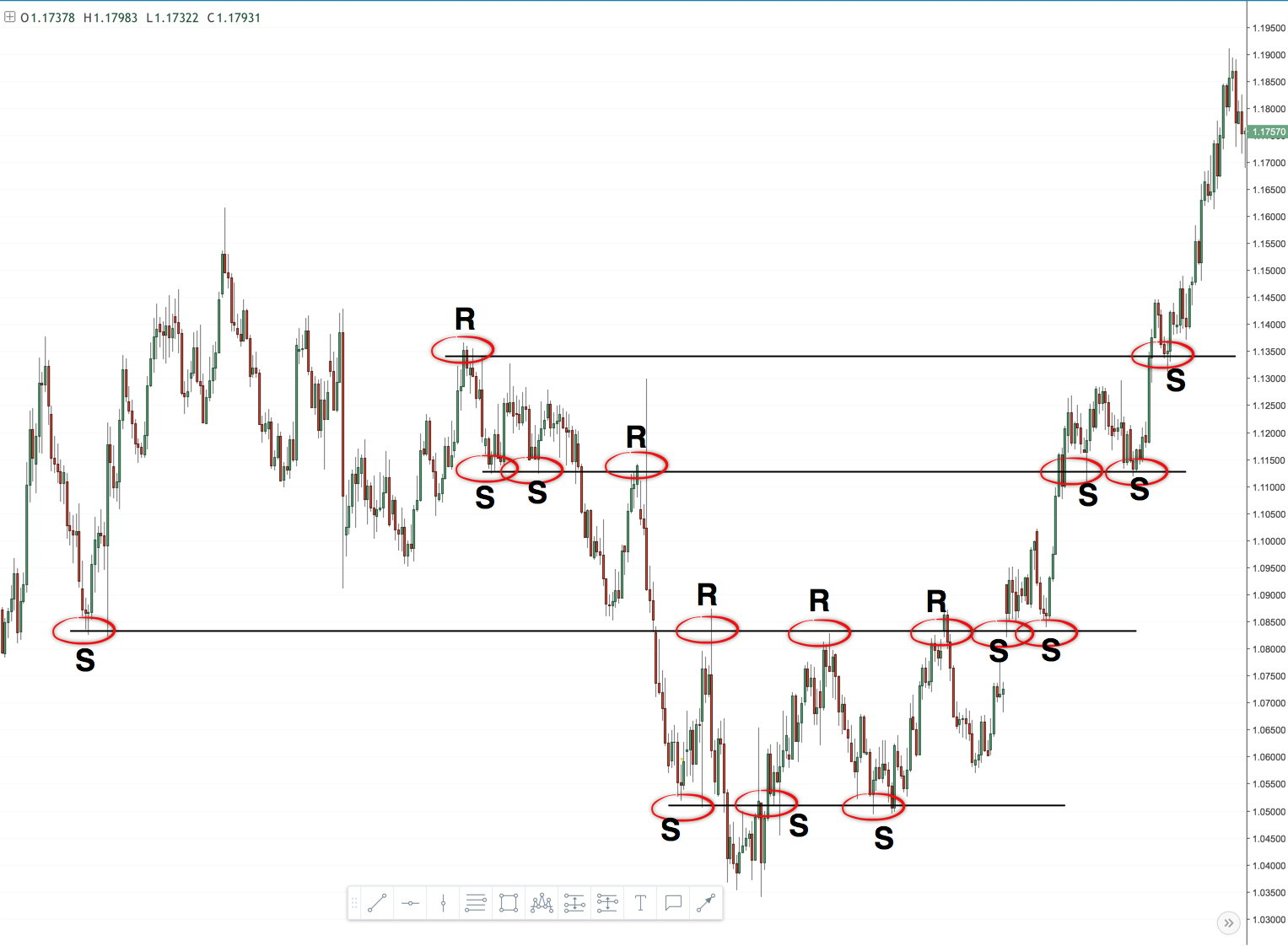Learn Trading for Free and Without Registration
An Online Glossary to Study Trading Independently
Trading from Levels
Trading with Support and Resistance Levels: Bounce and Breakout Strategies

Support and resistance levels are fundamental concepts in technical analysis. They help traders identify optimal entry and exit points by assessing the strength or weakness of price movements. In this article, we will explore two primary trading strategies based on these levels: the bounce strategy and the breakout strategy, while explaining when and how to use them effectively.
The Bounce Strategy
What is the bounce strategy?
The bounce strategy involves opening a position after the price tests a support or resistance level and bounces back. It’s similar to a ball bouncing off a wall — traders wait for confirmation that the level has held before entering the market.
Why not place trades directly on the levels?
A common mistake among novice traders is placing orders directly at support or resistance levels, assuming the price will always reverse. This approach carries high risk, as it’s uncertain whether the level will hold or break. Instead, wait for confirmation that the price has indeed bounced off the level before opening a position.
How to trade bounces?
- Identify the level. Determine a significant support or resistance level on the chart.
- Wait for confirmation. Observe how the price behaves when it approaches the level. If the level holds, the price should show signs of reversal, such as candlestick patterns or momentum slowing.
- Enter the trade. Open a position in the direction of the bounce.
- Set a stop-loss. Place your stop-loss below the support (for buy trades) or above the resistance (for sell trades) to minimize risk in case of a breakout.
Example:
- In an uptrend, the price may test a support level before resuming its upward movement.
- In a downtrend, a bounce from a resistance level indicates a continuation of the downward trend.
The Breakout Strategy
Support and resistance levels don’t last forever — the market often breaks through them. The breakout strategy focuses on entering a position when the price successfully moves through a key level. However, trading breakouts requires careful attention to avoid false signals.
Two approaches to breakout trading:
-
Aggressive approach.
This method is for risk-tolerant traders. A position is opened immediately after a decisive breakout. Key signs of a valid breakout include:- High trading volume accompanying the breakout.
- Candles closing firmly beyond the level.
- No immediate signs of reversal.
-
Conservative approach.
This method suits cautious traders. Instead of entering the market immediately, they wait for a retest. After a breakout, the price often returns to the broken level to test it as a new support or resistance. If the price bounces off this level again, it confirms the breakout and provides a safer entry point.
How to trade breakouts?
- Observe price behavior. Wait for the price to break through a key level and see if it returns to retest the level.
- Evaluate market conditions. Ensure the breakout is accompanied by high volatility and volume.
- Enter the trade. Open a position after a successful retest.
- Set protective orders. Use stop-losses to minimize potential losses from false breakouts.
Example:
- In an uptrend, after breaking a resistance level, the price may return to retest it as new support. If the level holds, it’s a strong signal to buy.
- In a downtrend, after breaking support, the price may test it as new resistance, signaling a selling opportunity.
When to Use Bounce and Breakout Strategies?
-
Bounce strategy:
- Best suited for range-bound markets where the price oscillates between support and resistance levels.
- Works effectively in calm markets with no strong trends or significant news events.
-
Breakout strategy:
- Ideal for volatile markets, especially during significant news releases or strong trending conditions.
- Effective when the price is clearly breaking out of established levels.
Why Combine Additional Tools?
No strategy is foolproof. To improve your success rate, combine support and resistance levels with:
- Volume analysis. High trading volumes confirm the significance of breakouts.
- Candlestick patterns. Reversal or continuation patterns can clarify entry points.
- Indicators. Tools like moving averages, RSI, or MACD can provide additional confirmation.
Conclusion
Bounce and breakout strategies are time-tested approaches that can be applied across all markets. Their effectiveness, however, depends on your ability to analyze the market and consider additional factors.
Keep in mind that these strategies perform best under stable conditions:
- Bounce: Suitable for range-bound markets with minimal external disruptions.
- Breakout: Ideal for high-volatility conditions and trending markets.
Always use stop-loss orders to manage risk and analyze the market carefully. By integrating supplementary tools and indicators, you can gain an edge and make more informed trading decisions.


